Operation Scramble
Federal Civil Defense Administration
1955
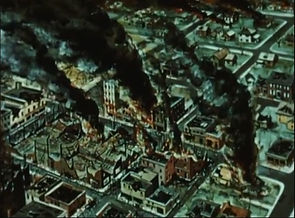
This film opens with a frightening premise. June 15, 1955, at approximately 2:45 p.m., an enemy hydrogen bomb detonates over the intersections of 11th and Pine streets in St. Louis, Missouri. 95,000 people are killed outright. Thanks to a well-established evacuation plan, a half-million others are able to escape the bomb's blast. This fiery scenario was the fate assigned to St. Louis in Operation Alert 1955, an annual civil defense drill designed to test the preparedness of America's largest cities. Among those moved to safety during the practice drills of Operation Alert were the patients and staff of St. Louis County Hospital. Situated in Clayton,
Missouri, eight miles east of St. Louis' projected ground zero, the hospital relocates another eighteen miles eastward to a school in the nearby town of Ellisville. Footage captured during this maneuver, dubbed Operation Scramble, was edited together with animated sequences into a film of the same name which was released by the Federal Civil Defense Administration in August of 1957.
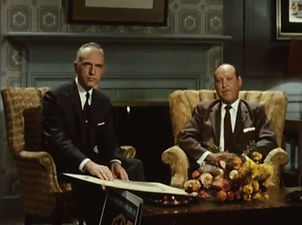
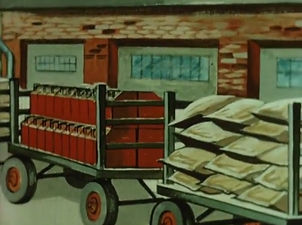
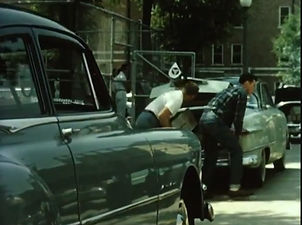
Dr. John M. Whitney, Health Services director for the F.C.D.A. introduces Dr. Rhoney, coordinator of Operation Scramble. The two men sit on a sound stage and answer questions from a voice-over narrator as though they are in front of a live audience. For the viewer's benefit, Dr. Rhoney gives a detailed account of the planning and execution of his hospital's evacuation drill. First, non-perishable supplies are placed into small trailers which are permanently stored in garages on the hospital campus. Upon receipt of a yellow alert, these trailers are affixed to the personal vehicles of staff members designated as drivers. Next, nurses load
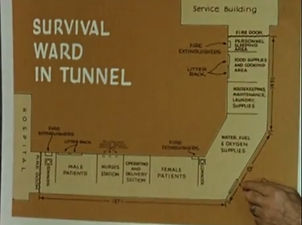
special supplies such as medicines and narcotics and intricate equipment like x-rays and anesthetic apparatuses into the trailers. Patients are dressed in wool blankets, wool caps and plastic sheeting before being moved into a car. Each car contains a driver, an attending nurse, three patients and enough supplies to last three days in case an individual vehicle is stranded. Whenever possible, medical interns and resident physicians serve as drivers. After all cars are loaded, they proceed out of town under police escort ninety minutes before the general population is made aware of the threat.




Operation Scramble assumes 10% of the hospital's patients will be non-transportable, meaning a skeleton staff must remain to attend to them. Dr. Rhoney explains that traction and recent post-operative cases, women in active labor, and those in critical condition who would require too many resources to properly evacuate to Ellisville, are instead moved into an underground service tunnel running between the main hospital and its outlying service buildings. This "survival ward" contains enough food, water, and medical supplies to last the estimated three days it will take until civil defense forces can restore order and
ensure resupply. In case the building collapses, an escape hatch has been added to the tunnel. Dr. Rhoney remarks that the service tunnel will provide adequate shielding from an enemy bomb's blast, fire, and subsequent radiation. Interestingly, a disclaimer at the beginning of the film reveals that the presence of radioactive fallout was not considered when planning for Operation Scramble. This omission likely led to the film being declared obsolete in the years following its release. By the 1960's protection from radioactive fallout became the focus of civil defense efforts in the United States. Previously published material which failed to properly address the lingering danger of radiation was often discarded by the Office of Civil Defense and by 1965, this successor agency to the F.C.D.A. was ordering all government prints of Operation Scramble returned and was suggesting that owners of private copies cease all screenings of it.
References
1. Federal Civil Defense Administration. 1957 Annual Statistical Report. United States Government Printing Office, 1957. 124.
2. Office of Civil Defense. Civil Defense Motion Picture Catalog. September 1966. 31.